FAQs
- Q?What are the main criteria used for the identification of endangered Turkic languages?
-
A.
Regarding the endangered languages, the first insititution that comes into mind is definitely UNESCO. The criteria used to designate the endangered Turkic languages are based on UNESCO’s Language Vitality and Endangerment framework taking the Intergenerational Language Transmission into account. The endangered Turkic languages located in the UNESCO interactive atlas have all been included in the list. To the exception of the Tatar language spoken within the borders of the Russian Federation, all other Turkic languages are subject to different degrees of danger of extinction. For determining whether languages are endangered, a number of other techniques devised by the experts on the basis of theoretical studies and fieldwork are also available.
- Q?How many volumes will the Handbook of Endangered Turkic Languages have?
-
A.
The Handbook of Endangered Turkic Languages will be a reference book composed of two volumes with approximately 45 chapters to be published both in Turkish and English.
- Q?What is the general approach adopted in the preparation of the Handbook of Endangered Turkic Languages?
-
A.
The work plan placed emphasis on making the utmost use of the available accumulation of knowledge and experience of the field experts. It is for this reason that the authors of chapters are those who have excelled in their fields with their expertise on the languages and cultures in question. Having kindly accepted taking part in the compilation of the book, they will contribute to the volumes in accordance with a timetable previously specified by the editors. Setting their diachronic features aside, all the endangered Turkic languages will be described and examined from a synchronic perspective in the original articles with an approximate word count between 5,000 and 7,000.
- Q?Who are the authors of the Handbook of Endangered Turkic Languages?
-
A.
The author list includes Abdurishid Yakup, Abdülkadir Atıcı, Ajana Ozonova, Alexander Garkavets, Ali Ilgın, Alyona Tazranova, Aminem Memtimin, Astrid Menz, Ayana Ozonova, Birsel Karakoç, Elisabetta Ragagnin, Ercan Alkaya, Évá A. Csató, Éva Kincses-Nagy, Eyüp Bacanlı, Fatih Kirişçioğlu, Figen Güner Dilek, Gülsüm Killi, Habibe Yazıcı Ersoy, Hans Nugteren, Hülya Kasapoğlu Çengel, Ingeborg Baldauf, Irina Nevskaya, Larisa Tıbıkova, Lars Johanson, M. Vefa Nalbant, Marcel Erdal, Mariya Çertikova, Mevlüt Erdem, Monika Rind-Pawlowski, Münevver Tekcan, Natalya Şirobokova, Oğuzhan Durmuş, Sema Aslan Demir, Semih Tezcan, Sultan Tulu, Süer Eker, Ülkü Çelik Şavk, and Yalkın Yanbay. Changes can be expected depending on developments in time.
- Q?When will the Handbook of Endangered Turkic Languages published?
-
A.
The project starts on November,1, 2012 and continues for 13 months until December 31, 2013, the planned date of publication.
- Q?What is the purpose of the publication of the Journal of Endangered Languages (JofEL)?
-
A.
Centering on the theme of endangered languages in general and on the endangered Turkic Languages in particular, the purpose of the publication of the Journal of Endangered Languages is to create a scholarly platform in order to raise awareness concerning the languages and cultures at various degrees of endangerment, to encourage and publish theoretical and applied studies on these languages, to survey and document the current phenomena, and to share them with the public and professional colleagues.
- Q?Is there a similar publication at home or abroad ?
-
A.
The phenomenon of endangered languages has drawn the attention of different intellectual, political, and social circles, thus become a popular area of research and investigation. Following UNESCO, many non-governmental organisations, universities, institutions and freelance researchers have been involved in developing projects on the endangered languages all around the world. Although there is a good number of books and websites, our search has revealed that neither in our country nor in the western world is there a similiar periodical published. Journal of Endangered Languages is the first of its kind.
- Q?Why is JofEL a thematic journal?
-
A.
Some of the periodicals tend to cover various studies from different fields. However useful this type of a journal policy may be, the Journal of Endangered Languages is dedicated merely on the endangered languages to establish a synergistic platform around a specific theme for the encouragement and support of the scholarly efforts put to safeguard these languages.
- Q?What is the relationship between JofEL and the web site?
-
A.
May they be written, audio or visual, the website titled Son Sesler/Last Voices aims to share both popular and scientific materials with a large academic and non-academic population. The website is an interface for JofEL, which mainly focuses on the scientific research articles on the subject. As both the website and the journal are interconnected, there is an easy online transition from one to the other.
- Q?Who can submit articles for JofEL ?
-
A.
JofEL is open to all original research articles contributing to the field according to established scientific norms.
- Q?Who can submit popular articles for the website “Son Sesler/Last Voices?
-
A.
The website is open for all types of popular and current information on endangered languages. All academics, including graduate students, from different disciplines are welcome to submit their written popular articles, audio or visual materials focusing on the endangered languages both Turkic or non-Turkic.
